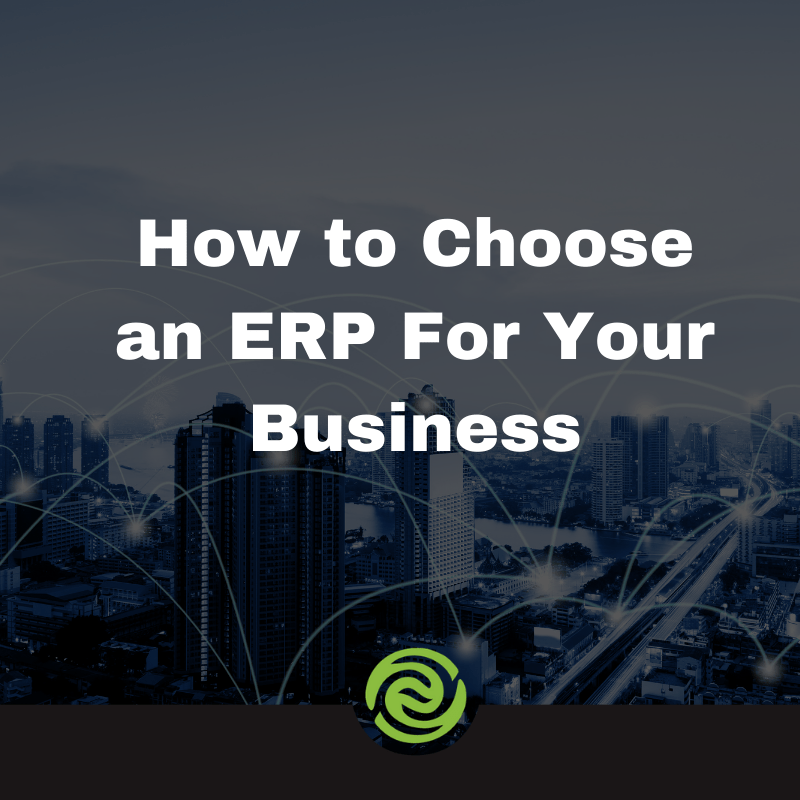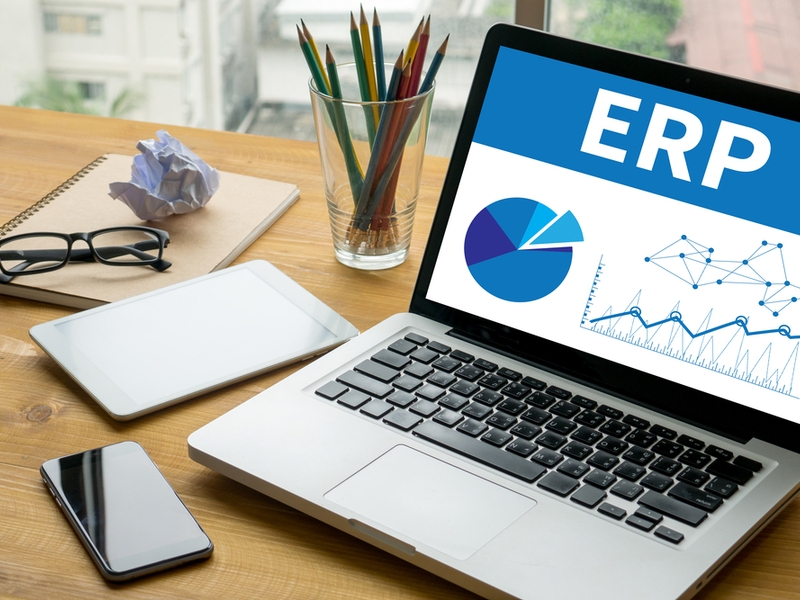How to Choose ERP Software for Your Business
What’s the number one complaint we hear from companies these days? They are unhappy with their existing Enterprise Resource Planning (ERP) software. We hear it all the time.
Enterprise Resource Planning software is very complicated. ERPs integrate customer relationship management (CRM), order management, scheduling, production, inventory, human resources, accounting, and much more. ERPs combine all departmental data into one complete system that streamlines processes and information flow across the organization.
Many businesses have nothing but headaches with their existing ERP software system. Their system either has too many bells and whistles, it’s too confusing, or outdated; it’s not designed for their business processes, or doesn’t do what they specifically need it to do.
Many ERPs are built vanilla, meaning that they are built to work across many industries. And the ERP vendors leave it up to the buyer to make the software work within their organization, which makes the whole ERP system a thorn in the company’s side.
We like to suggest another approach… select an ERP software solution that works FOR your business, instead of your business working for the ERP.
Choosing the Right ERP Software
Over time, companies change and evolve. As a result, the need for more personalized ERP software becomes apparent. The decision to create a custom solution or purchase an off-the-shelf system can depend on many different factors.
In most situations, purchasing an off-the-shelf system can reduce risk, be faster to implement, and be less expensive, but typically provides a “one size fits all” approach that may not work well for your business processes.
Why Choose Custom ERP Software?
For some companies, creating a custom ERP solution is a better option. If your market differentiators are what make you stand out from your competitors, your ERP system NEEDS to incorporate these. Building a custom ERP solution may be the only way to include these differentiators.
Why Choose Off-the-Shelf ERP Software?
For other companies, integrating several best-of-breed solutions may be the right choice. One example might be using an off-the-shelf CRM with off-the-shelf ERP software that is integrated into an industry-standard accounting package. This could also include a custom mobile app for customers orders or field service workers. Keep in mind that there is some integration needed for this type of solution to get everything to talk with each other. Tying together best-of-breed solutions may give you exactly what you need.
7 Best Practices of ERP Selection
Over the years, we’ve gathered a group of best practices when it comes to selecting or building an ERP system and we’d like to share those with you so you can make an informed decision when you’re ready to make an ERP change.
- Software on top of broken processes = broken software.
- Most companies think implementing any kind of tech is going to solve all their problems, but this is the contrary – software on top of broken processes will cause more problems.
- Look for clunky or ineffective processes.
- Fix the processes first, then implement the software.
- Conduct process mapping, look at current vs. future-state processes.
- Map your processes and determine where the breakdowns are happening.
- Modify or eliminate the processes that are causing the most problems.
- Create a parking lot of all the items that need to be addressed down the road.
- Look at build vs. buy vs. best-of-breed product integration.
- Build custom for market differentiators.
- Buy to save time.
- Integrate for best-of-breed products.
- Conduct deep-dive ERP vendor interviews.
- Don’t be wowed by bells and whistles.
- Ignore the dashboards.
- Ask DEEP questions and don’t believe everything the sales rep tells you – check with some of their customers or do your own research.
- Ask who you will be working with once the sale is complete.
- Assign a leader/form a team.
- Assign an individual to manage the overall process.
- Assign dedicated resources to an ERP team.
- Make this part of the team’s job responsibilities.
- What is your Minimum Viable Implementation (MVI)?
- Don’t try to do everything at once.
- Pick an area you will succeed in and implement it in that area.
- Get a good success story under your belt.
- Move to the next area.
- Repeat the above steps.
- Hit the gas and don’t let up!
- Schedule regular meetings.
- Don’t let the day-to-day slow down the process.
- Keep your foot on the gas until the project is done.
The Bottom Line… Your ERP Software Needs to Elevate Your Business Processes
We know choosing a new ERP is a big decision, and knowing which software will work best for your company can be a tough choice when faced with so many options. Defining what you need your ERP to do, fixing broken processes, and following a set of best practices, aligned with a firm commitment to implement your ERP in a timely manner will lead you to success and elevate your business processes.
Don’t want to go it alone? Swip Systems is here to help you select and implement the right ERP software solution, including vendor selection, and see it through to completion. Our goal is to take the fear out of the ERP selection process, reduce your risk, and keep you profitable.
Contact us today for a no-obligation chat about your ERP system. We love to help! 877.377.SWIP






